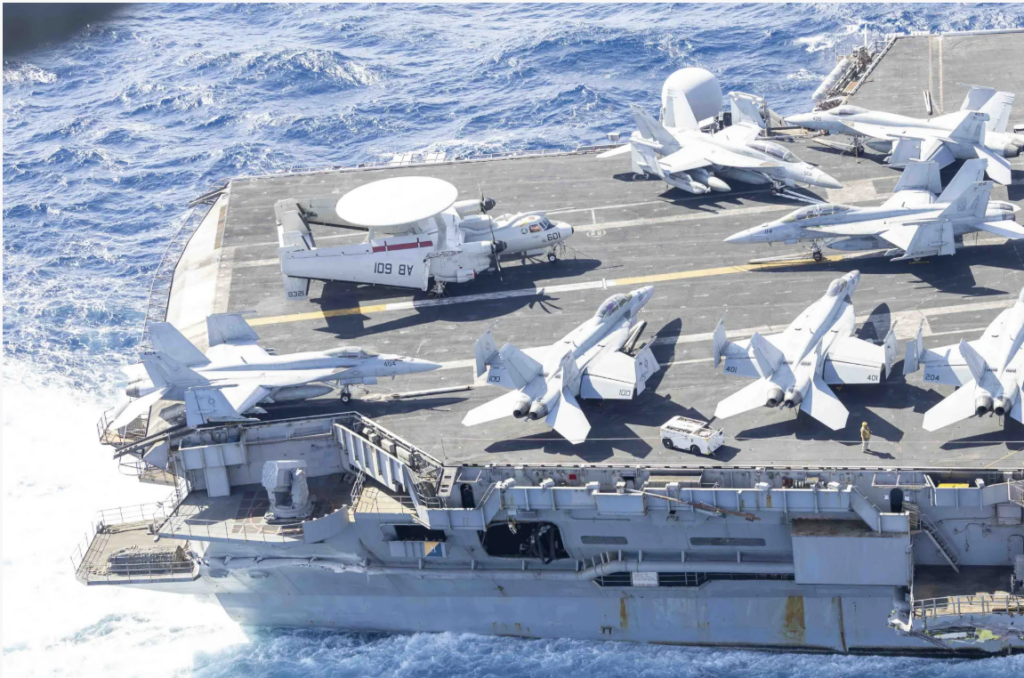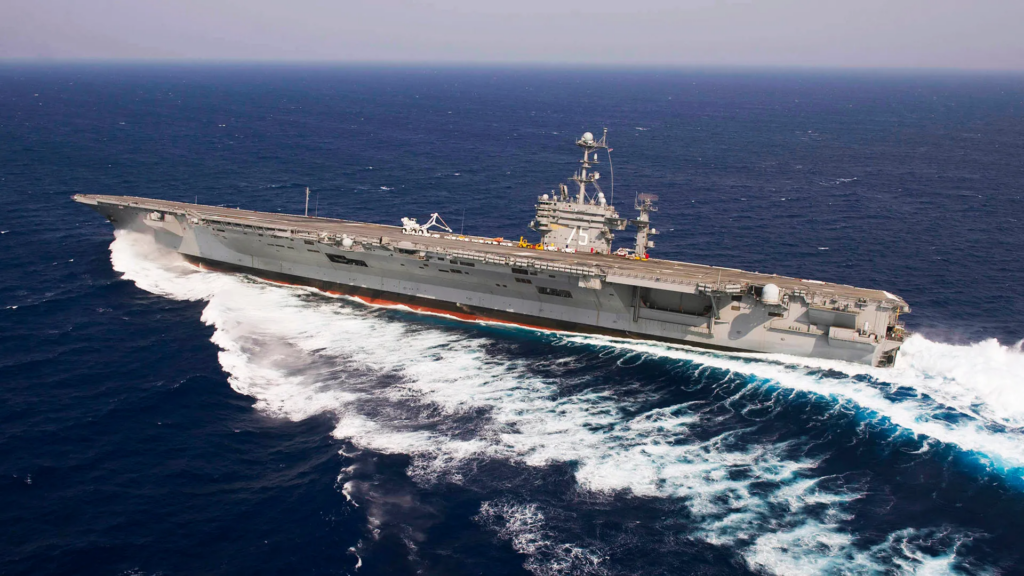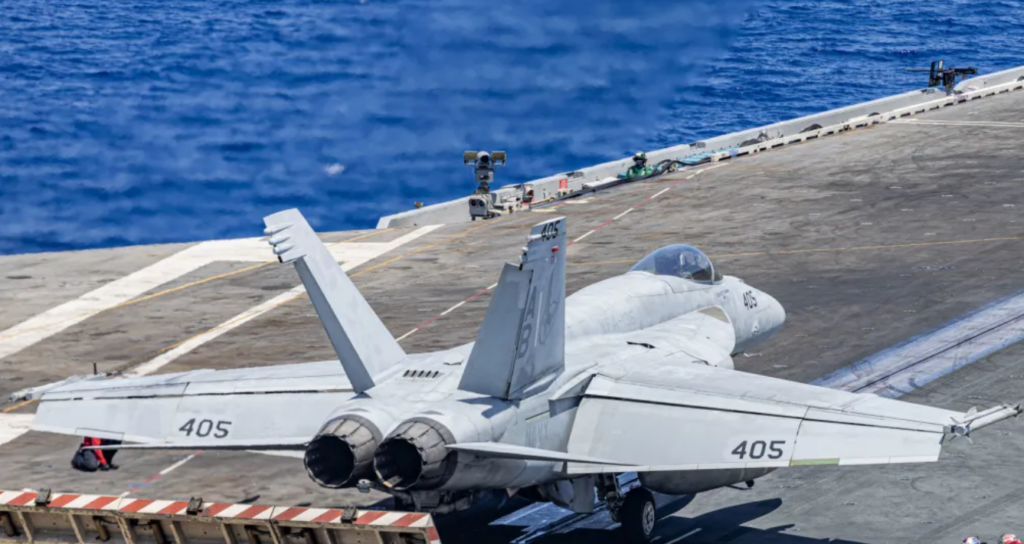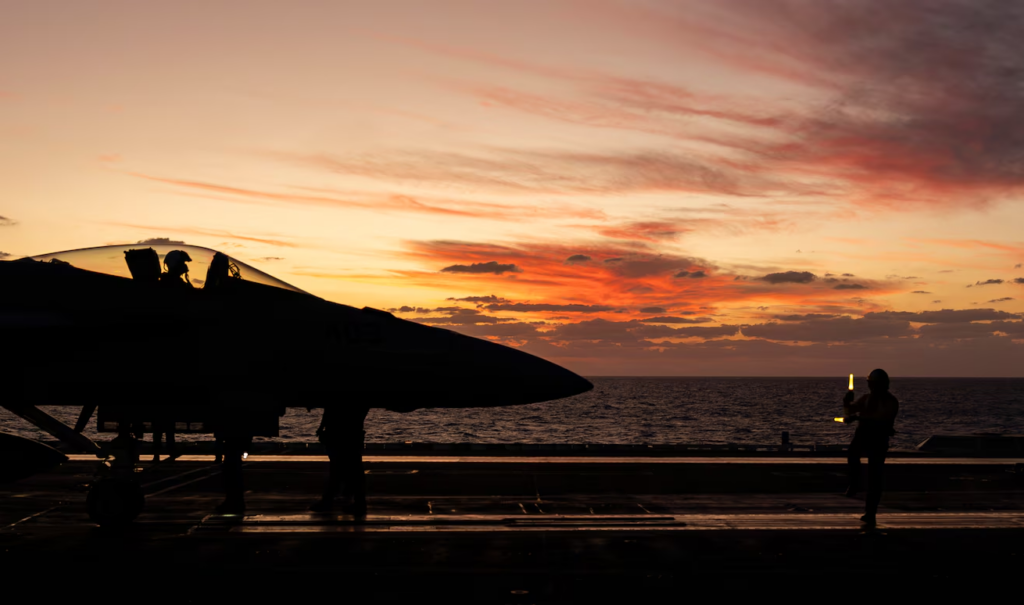U.S. Navy F/A-18E Super Hornet (and Tow Tractor) Lost Overboard During Evasion from Houthi Attack
A U.S. Navy aircraft carrier USS Harry S. Truman, operating in the Red Sea, suffered the loss of a F/A-18E Super Hornet from Strike Fighter Squadron (VFA) 136 on 28 April. As US forces in the region intensified their operations against the Houthi in Yemen the fighter jet and its tow tractor were lost overboard when the aircraft carrier executed a sudden evasive manoeuvre when targeted by a Houthi missile and drones.
The aircraft carrier turned sharply in response to an incoming threat, the unexpected movement caused the towing crew to lose control of both aircraft and its tow tractor which slid across the deck into the sea. All sailors in the area evacuated safely but one of them received a minor injury.

United States officials confirmed the vessel was repositioning due to Houthi attack but official statements avoided stating that cause directly. Fighters of the Houthi rebel group claimed responsibility for directing their attack against the Truman. The Navy stated the USS Harry S. Truman Carrier Strike Group maintained its operational readiness despite the loss of the aircraft and that an investigation is underway.

Nimitz-class aircraft carriers are 330m long and displace over 100,000-tons. Despite this the Truman remains highly manoeuvrable, using its power from its two nuclear reactors, enabling an unexpected agility. A typical evasive manoeuvre performed by US carriers are “zig-zags” which consist of fast alternating turns between 30 to 40 degrees that last about 30 seconds to avoid enemy missile or drone attacks. When ships perform quick sharp turns their steering angles reach between 10 to 15 degrees resulting in position changes from 100 to 200 yards from course origin that decreases target accessibility from enemy weapons systems. Photographs and videos from exercises demonstrate that the massive ships experience notable list during high-speed turning manoeuvres.
This event is part of a broader conflict in the Red Sea, where Houthi forces, aligned with Iran, have been regularly targeting commercial and military vessels.U.S. Navy forces remain actively involved in the defense of their assets and global shipping route protection activities. The carrier strike group lost its second significant piece of major equipment during deployment after another F/A-18 experienced friendly fire at the end of 2024. The vessel returned to oppearions in February following a collision with a merchant vessel which saw its captain relieved.

The incident demonstrates the substantial dangers that U.S. naval forces encounter while operating in contested maritime zones because of their unpredictable characteristics. The ongoing regional tensions have shown how essential it is to maintain readiness together with swift decision-making abilities during combat scenarios.

